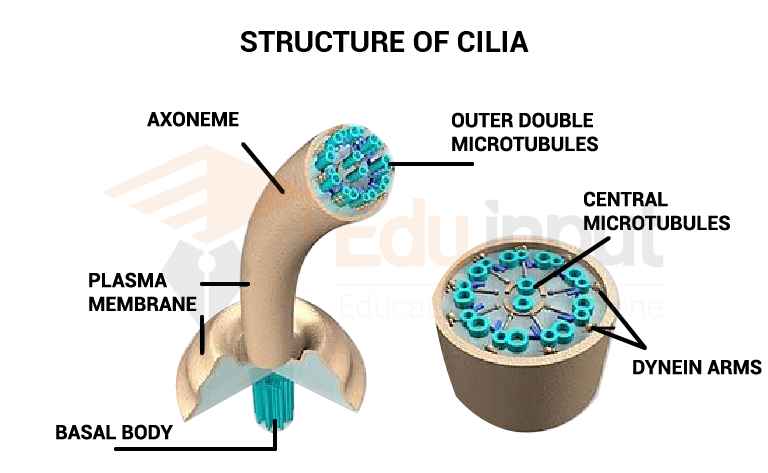Reproduction In Algae-Vegetative, Sexual, and Asexual Reproduction
Algae are a diverse group of organisms that range in size, shape, color, and habitat. Some are single-celled, others are multicellular, and some are microscopic. Algae are one of the oldest forms of life on earth.
They were present during the Cambrian period, about 500 million years ago. Algae are a vital component of the food chain and help regulate the amount of carbon dioxide in our atmosphere. They also absorb nitrogen from the air and release oxygen into the water.
Reproduction In Algae
Algae reproduce via sexual reproduction or asexual reproduction. Sexual reproduction occurs when two different types of cells combine to create offspring. Asexual reproduction occurs when only one type of cell splits apart to produce offspring. There may be advantages and disadvantages of sexual and asexual reproduction.
Algae reproduce by three means;
- Vegetative reproduction
- Asexual reproduction
- Sexual reproduction
Vegetative Reproduction In Algae
Vegetative reproduction is a method of plant propagation where plants are reproduced without sexual reproduction. This means that seeds or cuttings are taken from parent plants and grown into new plants.
Vegetative reproduction is a common way to propagate plants. There are two main types of vegetative reproduction: clonal and apomixis. Clonal reproduction involves taking cuttings or seedlings from a parent plant. Apomictic reproduction occurs when the embryo develops without fertilization. It occurs by different methods in algae.
Simple Division Or Fission.
It occurs by simple division in unicellular individuals. In multicellular algae, a part is detached from the plant body. It grows to form a new plant. It mostly occurs in Chlorophyta.
Fragmentation:
It also occurs in some species. In this case, some layers of cells or groups of cells detach from the body. They develop to form new plant bodies. Its example is spirogyra.
Propagules:
Some algae produce special propagules. They detach from the plant body and develop a new plant.
Tubers:
Some algae develop outgrowths. These outgrowths have stored food. The plant body is decayed in unfavorable conditions. The tubes grow in favorable conditions to form a new plant body. It occurs in chara.
Asexual Reproduction In Algae
Asexual reproduction occurs in favorable conditions. Different types of spores are produced during asexual reproductions. Spores are produced by the division of protoplast of cells or they are produced inside the sporangium.
Zoospores:
Motile spores are called zoospores. They have flagella or cilia. They are produced in a zoosporangium. Zoospores are produced in water. They are found in most algae. 2-16 spores are produced in each cell.
Aplanospores:
The non-motile spores are called aplanospore.
Hypnospores:
In this case, the cell secretes a thick wall and becomes rounded. It becomes a zygospore.
Akinetes:
If the original wall of the cell becomes thick, it is called akinete.
Endospores:
The protoplast of some cells divides to form endospores. Endospores develop new walls.
Exospores:
In this case, the cell wall ruptures at the distal end. Here are spores cut off from the protoplast at the distal end. Such spores are called exospores.
Palmella:
Sometimes, spores remain embedded in the mucilaginous matrix. Thus a rounded body is formed with many spores. This condition is called the Palmella stage.
Monospores:
A single non-motile spores is formed in Batrachospermum. It is called monospore.
Tetraspore:
In this case, four non-motile spores have f a sporangium. It occurs in some members of Phaeophyta.
Sexual Reproduction In Algae
Sexual reproduction occurs under unfavorable conditions. It produces a resting stage for passing an unfavorable period. Gametes are produced during sexual reproduction. These gametes are produced in gametangia. Gametes fuse to form zygote. The zygote secretes a thick wall and becomes a zygospore. Zygospore germinates during favorable conditions. There are different forms of sexual reproduction in algae.
1. Isogamy:
In this case. gametes have similar sizes and forms. Their fusion is called isogamy.
2. Anisogamy:
In this case, gametes have similar structures and forms but different sizes. The smaller active gamete is called the male gamete. The larger less active gamete is called the female gamete. They fuse to for zygospore.
3. Oogamy:
In this case, gametes have different forms and structures, sizes, and behaviors. The small motile gamete is called an antherozoid. They are produced in gametangia or antheridia. The non-motile larger gamete is called egg or oosphere.
It is produced in oogonium. The male, gamete swims in the water. It enters into oogonium. Fertilization occurs. The zygote secretes a thick wall and becomes an oospore.
4. Parthenogenesis:
Sometimes, the oosphere is changed into an oospore without fertilization. It forms parthenospore. This condition is called parthenogenesis.




Leave a Reply